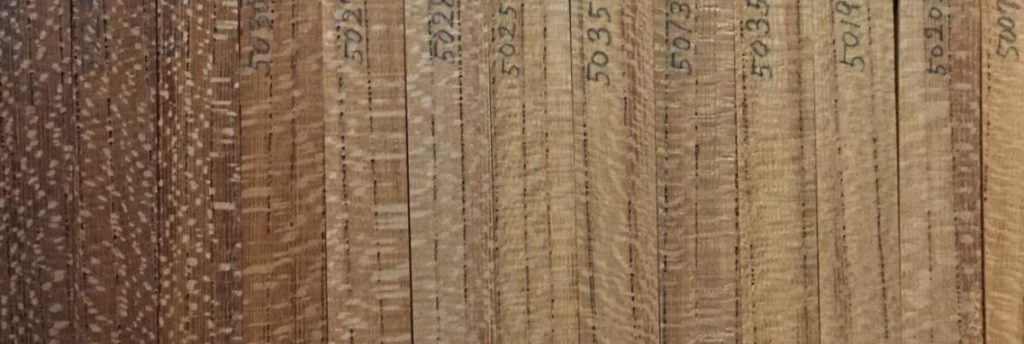RESEARCH SUMMARY
We are creating new low-environmental-load wood materials that utilize the structure and function of woody biomass, and are conducting research to deeply understand and evaluate the characteristics of the materials.
RESEARCH CONTENTS
Development of new wood materials

A variety of wood materials are widely used around us. Wood materials are made by splitting wood into boards, small pieces, fibers, etc., and then gluing them together to reconstitute the material. In this way, it is possible to overcome the shortcomings of solid wood and bring out its high performance. Aiming at the effective and sustainable use of plant biomass, our laboratory is developing environmentally friendly woody materials with practical levels of performance and productivity, using not only wood but also unused biomass such as herbaceous plants and agricultural waste as research targets.
Development of new natural adhesives

Wood materials are manufactured by using synthetic adhesives with wood as the main raw material. Since synthetic adhesives are made from materials derived from fossil resources, it is desirable to use adhesives made from non-fossil resources in the future. Natural adhesives that use biological resources have existed for a long time, but their performance is greatly inferior to that of synthetic adhesives. Therefore, we are working on the development of new natural adhesives that are comparable to synthetic adhesives. For example, for the first time in the world, we have found that a mixture of citric acid and sucrose can be used as an adhesive.
Research on natural aging of wood and wood-based materials

Wood and wood-based materials deteriorate or change their properties over time. This is called natural aging. Understanding natural aging is important for the long-term use of these materials. In our laboratory, we analyze naturally aged materials and compare natural aging and accelerated aging. We aim to elucidate the aging mechanism and predict the service life of materials, as well as to develop artificially aged materials.
Research on growth stress of wood

The internal stress called “growth stress” is generated in a stem or branches through the growth of a tree. The growth stress contributes to protecting the xylem and controlling the tree form. While growth stress is an important strategy for trees, the growth stress caused the cracks and deformations of wood through the machining. We characterize the growth stress in trees as well as try to find ways to control it or apply it to material development.
Wood material development using AI

To contribute to the establishment of a sustainable society, it is believed that wood-based materials play an important role, and their demand continues to grow annually. To advance the development of these materials, we leverage AI technology with the following objectives:
- Developing rapid and accurate property prediction system.
- Optimizing manufacturing conditions.
- Exploring innovative wood-based materials.
LECTURE IN CHARGE
・Introduction to Forest and Biomaterials Science B (Undergraduate 1st year students / Intensive, First semester)
・Wood Composite Products (Undergraduate 4th year students, First semester)
・Sustainable Materials (Graduate school / Intensive, First semester)
LABORATORY SEMINAR
Every Wednesday (Progress report and Introduction to literature etc.)
※Please contact us if you would like to visit ↓![]()
(Prof.UMEMURA)
Research Exchange Map
We conduct research exchanges with various research institutes in Japan and overseas.
